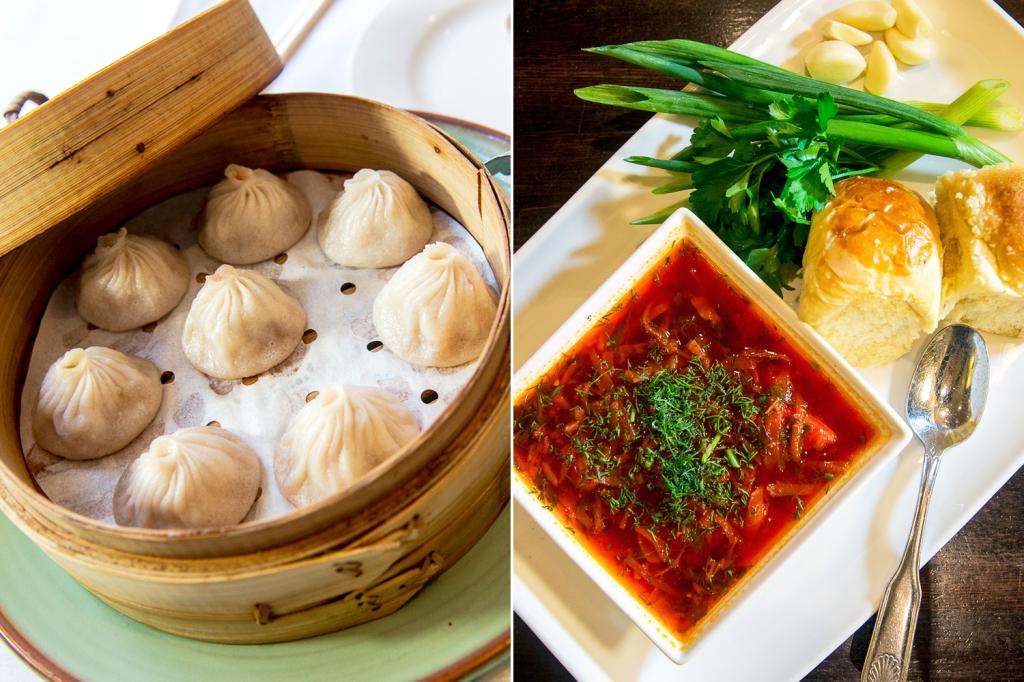Chinese dumplings and Polish pierogi are two of the most popular types of dumplings worldwide. Chinese dumplings originated in China during the Han dynasty and are made with ground meat or vegetables, such as pork, beef, and scallions, while pierogi originated in central and eastern Europe and are filled with mashed potatoes and cheese. Chinese dumplings are steamed, whereas pierogi are boiled and served with butter and sour cream. Variations include shrimp-filled dumplings and sweet or savory pierogi. Ultimately, the best dumpling depends on personal preference and cuisine. Chinese dumplings symbolize wealth and prosperity during the Lunar New Year, while pierogi are a Polish national symbol.
Chinese Dumplings vs. Polish Pierogi: A Dumpling Decider
Introduction
Dumplings are a beloved food in many cultures around the world. They are perfect as a snack, main course, or side dish. Two of the most popular types of dumplings are Chinese dumplings and Polish pierogi. While they may look similar, they have distinct differences that set them apart. In this article, we will compare and contrast Chinese dumplings and Polish pierogi to help you decide which is the better dumpling for you.
Origins
The origins of Chinese dumplings can be traced back to the Han dynasty (206 BC–220 AD). The story goes that a doctor wanted to help the poor people who were suffering from the cold weather. He mixed meat and herbs and wrapped them in a thin dough skin, which he boiled in water. The result was a warm, delicious, and nutritious dumpling that became popular throughout China.
Polish pierogi are also an old dish that originated in central and eastern Europe. The earliest known mention of pierogi dates back to the 13th century in Poland. Pierogi were first considered a peasant food, as they were made from readily available ingredients such as potatoes, cheese, and sauerkraut. Today, pierogi are enjoyed by people from all walks of life and have become a national symbol of Poland.
Ingredients
One of the most significant differences between Chinese dumplings and Polish pierogi is the filling ingredients. Chinese dumplings typically consist of ground meat or vegetables, such as pork, beef, cabbage, and scallions. A unique ingredient for Chinese dumplings is the addition of Chinese chives, which give a distinct flavor to the meat filling.
On the other hand, pierogi are filled with mashed potatoes and different types of cheese, such as farmer or cottage cheese. You can also find pierogi filled with sauerkraut, mushrooms, or meat. The dough used for pierogi is thicker and richer than Chinese dumplings and is often made with eggs or sour cream.
Preparation
Both Chinese dumplings and pierogi are boiled or steamed in water to cook. However, Chinese dumplings are usually steamed, while pierogi are boiled. Chinese dumplings are smaller and take about five minutes to cook in a bamboo steamer or metal strainer. The dough is thin and delicate, which makes it easy to overcook or break.
Pierogi, on the other hand, are much larger and take about 10 to 12 minutes to cook. The dough is thicker and can hold up to boiling without breaking or falling apart. Pierogi are often served with butter and sour cream on top, while Chinese dumplings are usually served with a dipping sauce made from soy sauce, vinegar, and chili oil.
Variations
Both dumplings have a wide range of variations based on regional cuisines and seasonal ingredients. For example, Chinese dumplings are filled with shrimp, mushrooms, or even fruit, while pierogi can be sweet or savory. In China, there are many different types of dumplings, including potstickers, steamed dumplings, and soup dumplings.
Poland has a variety of pierogi, including Ruskie (potato and cheese), Szpinak (spinach and cheese), and Miesne (meat). Pierogi are often eaten during holidays or special occasions, such as Christmas, Easter, or weddings. In China, dumplings are a popular food during the Lunar New Year, where they symbolize wealth and prosperity.
Conclusion
In conclusion, both Chinese dumplings and Polish pierogi have a rich history and are beloved foods within their cultures. They differ in ingredients, preparation methods, and variations but share the same concept of wrapping a filling in dough. Chinese dumplings are smaller, delicate, and are made with different meats and vegetables. On the other hand, pierogi are larger, thicker, and can be filled with potatoes, cheese, and sauerkraut. Ultimately, the best dumpling for you depends on personal preference and what type of cuisine you enjoy.
